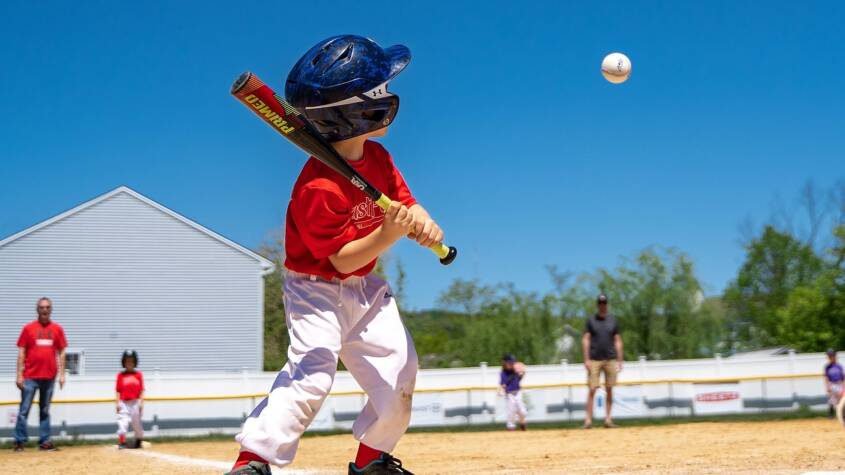
The world of baseball bats is dominated by a range of wood bat companies that cater to players of all levels. These companies offer a variety of options that can significantly enhance a player’s performance and experience on the field. From handcrafted models to technologically advanced designs, each brand brings its own unique features and benefits to the market.
Top wood baseball bat companies, such as Louisville Slugger and Marucci, have established a reputation for quality and durability. Their bats are engineered to provide optimal balance and control, making them popular choices among amateur and professional players alike.
Exploring various wood bat companies reveals insights into the craftsmanship and materials that influence bat performance. Understanding these factors can help players make informed decisions when selecting their next bat.
History of Wood Baseball Bat Manufacturing
Wood baseball bats have evolved significantly over the years, reflecting advancements in materials and design. Changes in manufacturing techniques and wood types have also influenced bat performance. This section explores the evolution of bat design, the impact of wood type, and notable innovations in bat making.
Evolution of Bat Design
Initially, baseball bats were handcrafted from a single piece of wood, primarily hickory. The designs were simplistic, focusing on functionality rather than performance. By the late 19th century, companies like Louisville Slugger and Rawlings began mass-producing bats, leading to standardized shapes and sizes.
In the 1930s, the introduction of the tapered design allowed for better aerodynamics, enhancing swing speed. The late 20th century saw further innovations, like the use of composite materials alongside wood. These advancements opened new avenues in bat design, contributing to improved performance and player preferences.
Impact of Wood Type on Bat Performance
Different types of wood significantly influence bat performance. Popular choices include ash, maple, and birch, each offering unique benefits. Ash bats are known for their flexibility and lighter weight, while maple is favored for its density and hardness, providing a solid feel upon contact.
Birch combines characteristics from both ash and maple, offering a balance of flexibility and durability. The choice of wood also affects the “sweet spot” of the bat, impacting hitting efficiency. Players select bats based on their swing mechanics and personal preferences regarding feel and performance.
Notable Innovations in Bat Making
Technological advancements have led to noteworthy innovations in bat manufacturing. For example, the introduction of computer-aided design (CAD) has allowed manufacturers to create precise bat shapes that enhance performance. This technology enables the detailed analysis of swing dynamics and bat impact.
Moreover, production techniques have improved, with companies utilizing processes that ensure consistency in weight and balance. The emergence of custom bat shops enables players to personalize their equipment, further enhancing performance. Innovations continue to shape the landscape of wood baseball bat manufacturing, meeting the evolving needs of athletes.
Leading Wood Baseball Bat Companies
Several companies dominate the wood baseball bat market, each with a rich history and unique craftsmanship. These brands are recognized for their quality, performance, and customizable options.
Market Leaders and Their Origins
The leading wood baseball bat companies include Louisville Slugger, Ashbats, and Marucci.
- Louisville Slugger: Founded in 1884, this brand has been synonymous with baseball bats. Players like Babe Ruth and Derek Jeter have used their iconic bats.
- Marucci: Established in 2004, Marucci was born from a desire to create high-quality, performance-driven bats. It quickly gained popularity among MLB players due to its innovative designs.
- Ashbats: Specializing in hand-crafted maple bats, Ashbats focuses on durability and balance. Their bats are crafted using traditional methods passed down through generations.
Craftsmanship and Production Processes
The production of wood baseball bats involves meticulous craftsmanship. Each company employs experienced craftsmen who prioritize quality.
- Wood Selection: High-grade wood, such as maple or ash, is crucial. Companies often source their wood from specific regions to ensure consistency in grain patterns and strength.
- Turning: The turning process shapes the bat on a lathe. Precision is key to achieving the desired swing weight and balance.
- Finishing: After shaping, bats undergo a finishing process that includes drying, sanding, and applying lacquer or varnish. This enhances durability and aesthetics.
Custom Bat Services and Personalization
Leading companies offer customization to meet player preferences. Personalization options include size, weight, and aesthetic features.
- Length and Weight Options: Players can choose from various lengths and weights to optimize performance and comfort.
- Engravings: Many brands allow customers to add personal engravings. This may include names, numbers, or custom designs.
- Specialty Models: Some companies provide access to pro models or limited editions. These bats are crafted using advanced technology and materials tailored to enhance playability.
Recycling Drop Off Locations: Find Convenient Sites for Sustainable Waste Disposal
Finding convenient recycling dropoff locations can greatly simplify the process of sustain…










